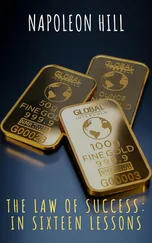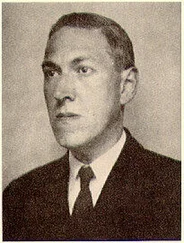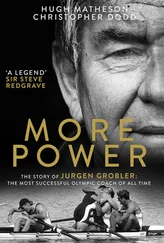Air is a localized substance which performs, in the main, the service of feeding all animal and plant life with oxygen and nitrogen, without which neither could exist. Nitrogen is one of the chief necessities of plant life and oxygen one of the mainstays of animal life. Near the top of very high mountains the air becomes very light, because it contains but little nitrogen, which is the reason why plant life cannot exist there. On the other hand, the “light” air found in high altitudes consists largely of oxygen, which is the chief reason why tubercular patients are sent to high altitudes.
Even this brief statement concerning molecules, atoms, electrons, air, ether and the like, may be heavy reading to the student, but, as will be seen shortly, this introduction plays an essential part as the foundation of this lesson.
Do not become discouraged if the description of this foundation appears to have none of the thrilling effects of a modern tale of fiction. You are seriously engaged in finding out what are your available powers and how to organize and apply these powers. To complete this discovery successfully you must combine determination, persistency and a well defined DESIRE to gather and organize knowledge.
The late Dr. Alexander Graham Bell, inventor of the long distance telephone and one of the accepted authorities on the subject of vibration, is here introduced in support of this author’s theories concerning the subject of vibration:
“Suppose you have the power to make an iron rod vibrate with any desired frequency in a dark room. At first, when vibrating slowly, its movement will be indicated by only one sense, that of touch. As soon as the vibrations increase, a low sound will emanate from it and it will appeal to two senses.
“At about 32,000 vibrations to the second the sound will be loud and shrill, but at 40,000 vibrations it will be silent and the movements of the rod will not be perceived by touch. Its movements will be perceived by no ordinary human sense.
“From this point up to about 1,500,000 vibrations per second, we have no sense that can appreciate any effect of the intervening vibrations. After that stage is reached, movement is indicated first by the sense of temperature and then, when the rod becomes red hot, by the sense of sight. At 3,000,000 it sheds violet light. Above that it sheds ultra-violet rays and other invisible radiations, some of which can be perceived by instruments and employed by us.
“Now it has occurred to me that there must be a great deal to be learned about the effect of those vibrations in the great gap where the ordinary human senses are unable to hear, see or feel the movement. The power to send wireless messages by ether vibrations lies in that gap, but the gap is so great that it seems there must be much more. You must make machines practically to supply new senses, as the wireless instruments do.
“Can it be said, when you think of that great gap, that there are not many forms of vibrations that may give us results as wonderful as, or even more wonderful than, the wireless waves? It seems to me that in this gap lie the vibrations which we have assumed to be given off by our brains and nerve cells when we think. But then, again, they may be higher up, in the scale beyond the vibrations that produce the ultra-violet rays. [AUTHOR’S NOTE: The last sentence suggests the theory held by this author.]
“Do we need a wire to carry these vibrations? Will they not pass through the ether without a wire, just as the wireless waves do? How will they be perceived by the recipient? Will he hear a series of signals or will he find that another man’s thoughts have entered into his brain?
“We may indulge in some speculations based on what we know of the wireless waves, which, as I have said, are all we can recognize of a vast series of vibrations which theoretically must exist. If the thought waves are similar to the wireless waves, they must pass from the brain and flow endlessly around the world and the universe. The body and the skull and other solid obstacles would form no obstruction to their passage, as they pass through the ether which surrounds the molecules of every substance, no matter how solid and dense.
“You ask if there would not be constant interference and confusion if other people’s thoughts were flowing through our brains and setting up thoughts in them that did not originate with ourselves?
“How do you know that other men’s thoughts are not interfering with yours now? I have noticed a good many phenomena of mind disturbances that I have never been able to explain. For instance, there is the inspiration or the discouragement that a speaker feels in addressing an audience. I have experienced this many times in my life and have never been able to define exactly the physical causes of it.
“Many recent scientific discoveries, in my opinion, point to a day not far distant perhaps, when men will read one another’s thoughts, when thoughts will be conveyed directly from brain to brain without intervention of speech, writing or any of the present known methods of communication.
“It is not unreasonable to look forward to a time when we shall see without eyes, hear without ears and talk without tongues.
“Briefly, the hypothesis that mind can communicate directly with mind rests on the theory that thought or vital force is a form of electrical disturbance, that it can be taken up by induction and transmitted to a distance either through a wire or simply through the all-pervading ether, as in the case of wireless telegraph waves.
“There are many analogies which suggest that thought is of the nature of an electrical disturbance. A nerve, which is of the same substance as the brain, is an excellent conductor of the electric current. When we first passed an electrical current through the nerves of a dead man we were shocked and amazed to see him sit up and move. The electrified nerves produced contraction of the muscles very much as in life.
“The nerves appear to act upon the muscles very much as the electric current acts upon an electromagnet. The current magnetizes a bar of iron placed at right angles to it, and the nerves produce, through the intangible current of vital force that flows through them, contraction of the muscular fibers that are arranged at right angles to them.
“It would be possible to cite many reasons why thought and vital force may be regarded as of the same nature as electricity. The electric current is held to be a wave motion of the ether, the hypothetical substance that fills all space and pervades all substances. We believe that there must be ether because without it the electric current could not pass through a vacuum, or sunlight through space. It is reasonable to believe that only a wave motion of a similar character can produce the phenomena of thought and vital force. We may assume that the brain cells act as a battery and that the current produced flows along the nerves.
“But does it end there? Does it not pass out of the body in waves which flow around the world unperceived by our senses, just as the wireless waves passed unperceived before Hertz and others discovered their existence?”
EVERY MIND BOTH A BROADCASTING AND A RECEIVING STATION: This author has proved, times too numerous to enumerate, to his own satisfaction at least, that every human brain is both a broadcasting and a receiving station for vibrations of thought frequency.
If this theory should turn out to be a fact, and methods of reasonable control should be established, imagine the part it would play in the gathering, classifying and organizing of knowledge. The possibility, much less the probability, of such a reality, staggers the mind of man!
Thomas Paine was one of the great minds of the American Revolutionary Period. To him more, perhaps, than to any other one person, we owe both the beginning and the happy ending of the Revolution, for it was his keen mind that both helped in drawing up the Declaration of Independence and in persuading the signers of that document to translate it into terms of reality.
Читать дальше












